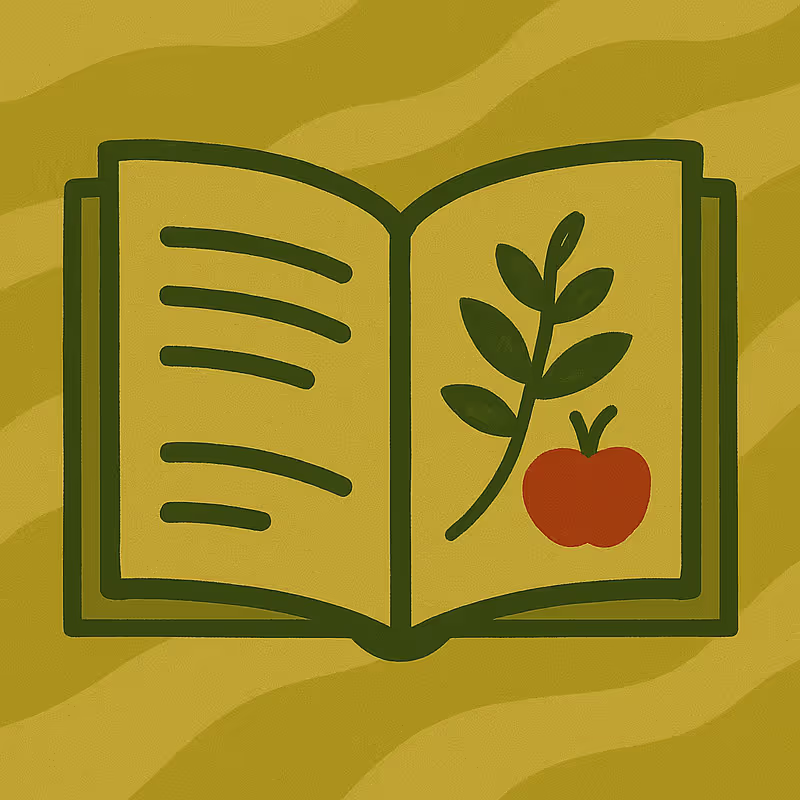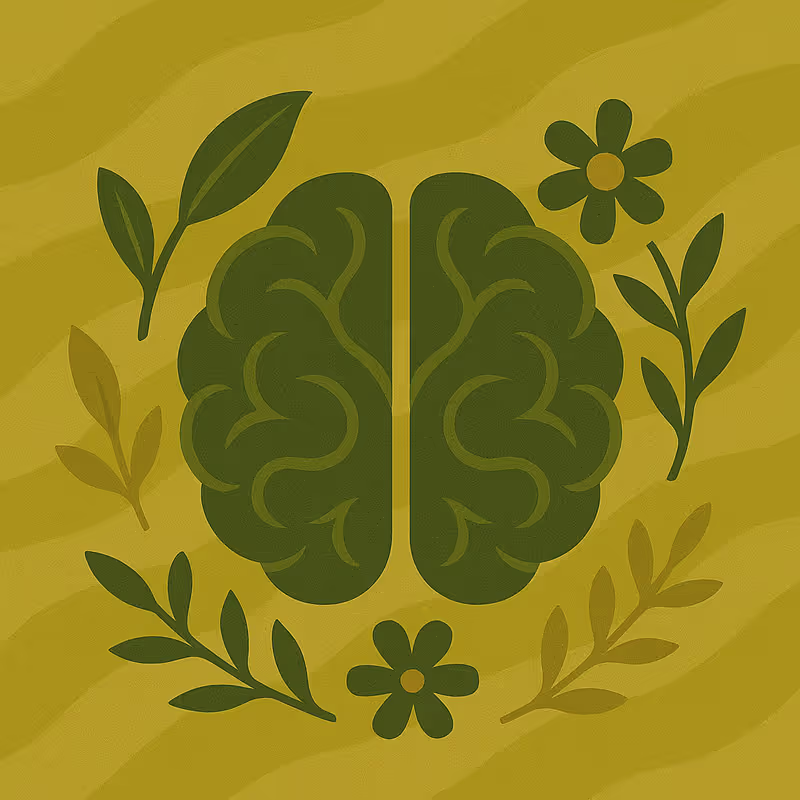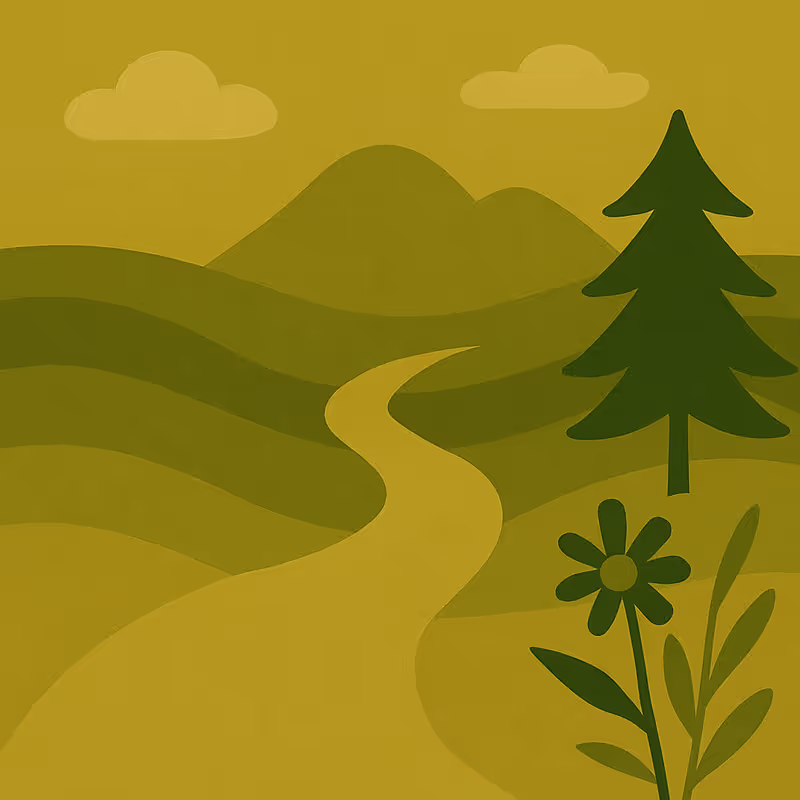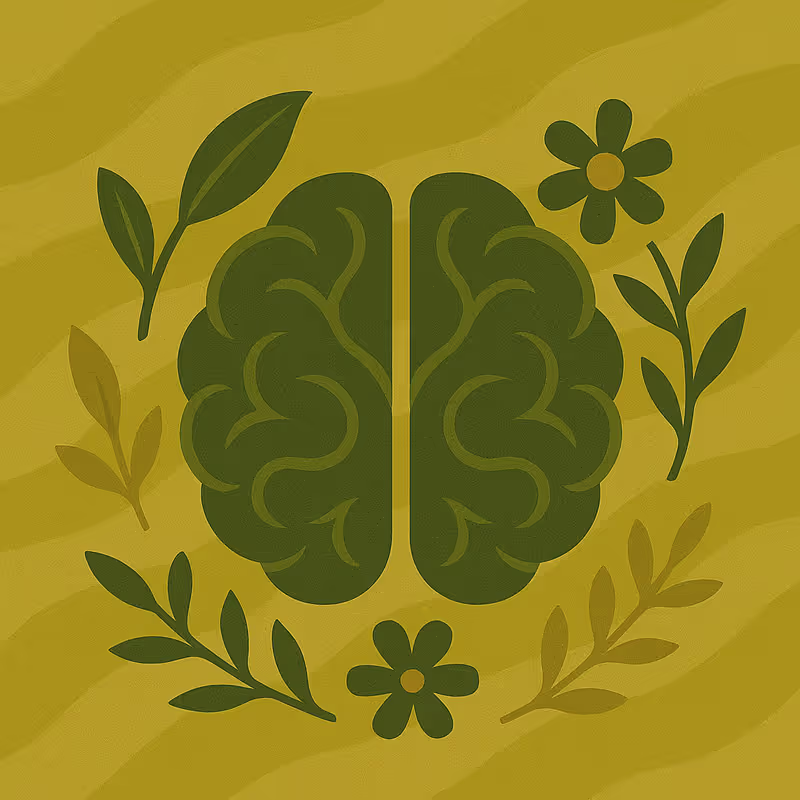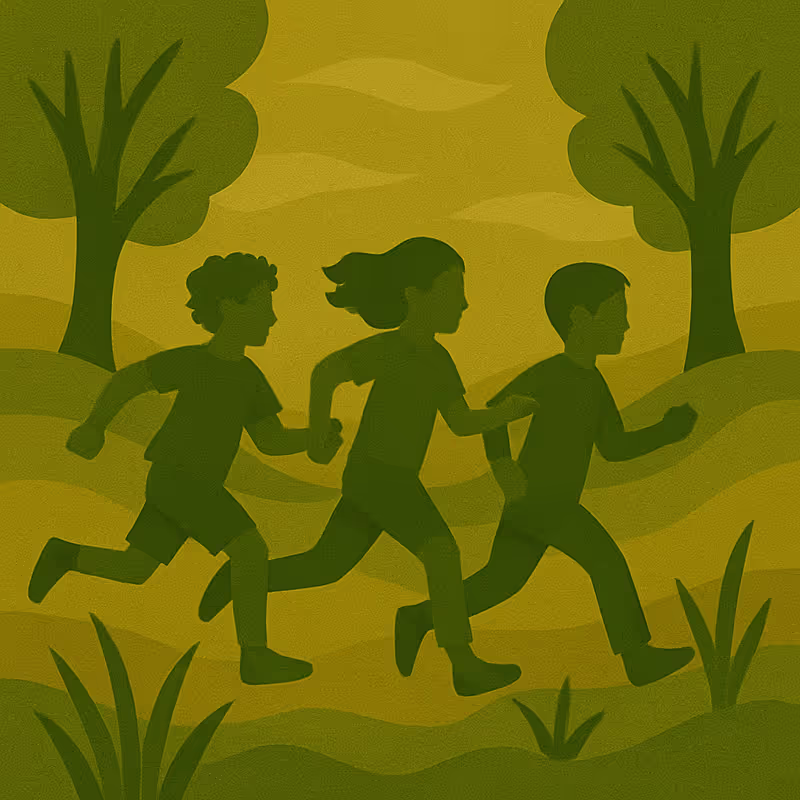Overview
In today’s fast-paced and urban environments, many children and young people spend little time outdoors or in quiet contact with nature. This simple outdoor meditation invites students to take a moment to slow down, and appreciate biodiversity through the small, beautiful details in the world around them.
Learning objectives
This activity helps reduce stress and will hopefully contribute to fostering in students more awareness of their place within the natural world.
Repeating this activity regularly can deepen its impact, helping students grow a lasting connection to nature. We hope you and your students enjoy it!
Links with the other resources and duration
This activity works best after the lesson on The benefits of connecting with nature. It can also be delivered during the Nature hike activity.
The activity can also be done in-between the two lessons on Biodiversity and the natural world in crisis.
You can also use this activity on its own, whenever you want to give students a moment to slow down and pay attention to nature. Again, the more you do this activity with your students, the more it will help them deepen their connection with nature!
Introduction
As teacher, you are the guide. Help set a calm tone, provide a safe and quiet space, and lead students through a simple, gentle relaxation and mindfulness practice. No specialist knowledge is needed, just a slow and thoughtful pace.
Materials
- Guiding script (available below)
- Questions for post-session reflection
- Quiet outdoor space conducive to relaxation
- Optional: Picnic blankets, or something else to sit on, for comfort. If the grass is not wet or cold, it could be beneficial to sit directly on the grass / soil.
Pre-lesson preparation
Ahead of the lesson:
- Choose an outdoor area: a school garden, park, tree-lined area, or even take the students for an outing. Complete any logistical planning for travel if needed.
- If any of your students have disabilities or health conditions which may impact participation, ensure relevant adaptations are made so that the activity can be practiced by all bodies.
- Review the Script of the meditation and the Adaptation sub-section, as you may have to slightly adjust the script to fit students’ age or the circumstances of your setting.
For example, do not mention sitting against a tree if there are no trees, or not enough trees for all your students.
Tips for teachers
- Allow pauses during the session for silent reflection and sensory immersion.
- Conclude the session with a series of deep breaths, gradually guiding participants back to awareness to their immediate environment.
- Do a test run yourself before leading the session.
- Encourage silence, but don’t scold for small movements or giggles, young students particularly are learning how to be still.
- Use nature vocabulary to build environmental literacy (e.g. rustling, dappled, scent, canopy, etc.)
- Take cues from the participants’ pace, allowing adequate time for silent reflection and sensory engagement.
- Use gentle guidance to encourage participants to stay present but avoid rushing or forcing engagement.
- Try repeating the session regularly (e.g. once per term) to deepen students’ nature connection over time.
Activity plan
1. Get comfortable
Ask students to sit or lie down quietly. Encourage them to immerse themselves fully in the experience, remaining present and quiet to deepen their connection to the environment. Invite them to release their judgments or discussions and allow the meditation to foster relaxation and openness to the surrounding nature.
Then tell them to close their eyes. Remind them that this is a quiet time: no talking or giggling.
2. Script: Nature (for secondary school students)
[Say slowly:]
Sit or stand with your back against a tree. If you feel safe doing so, close your eyes.
[or, if there are not enough trees for every student:]
Sit and place your palms on the ground.
Let’s take 5 deep breaths together. In through the nose… hold… and out through the mouth.
Feel the air coming in and out. Notice your body getting a little bit heavier with each breath.
[skip the section with the tree below if not relevant]
Feel the tree against your body. Consider how the tree is simply being. It isn’t trying, battling, or judging. It is an alive, peaceful presence. Let that presence – that unconditional support – prop you up. There is nothing for you to do right now, either..
[Pause]
Feel the weight of your body on the earth. The sense of your feet or legs on the ground.
Consider the live beings beneath you – microscopic, unseen, underground, supporting and sustaining everything around you.
Thank them for allowing you to share their space. Feel the presence of the ground holding you up. Notice the support it gives, without asking anything in return. Feel the live energy of the Earth.
[Pause]
Notice if allowing yourself to be still is bringing any emotions to the surface. If it is, allow those emotions to be there with you. When we take the time to be present, it’s normal to notice emotions, especially uncomfortable ones, arise. Without emotions, you wouldn’t be human!
Notice the temperature of the air against your skin.
Tune into the aliveness of your body feeling that temperature, and, if there’s a breeze, the sensation of it against your skin.
Take a few deep breaths. Offer gratitude for the free, nutritious air going into your lungs.
Feel your lungs expanding and contracting, and the sensation of the air nourishing you, keeping you alive. Reflect on how that air is feeding your body, and blood, and cells. How it supports your heart and organs; your brain and your skin.
[Pause]
Feel your tongue in your mouth. Notice where it’s sitting, what it’s touching. Allow yourself to taste whatever is in the air, even if that taste is nothing. What does nothing taste like?
[Pause]
Are there any other physical sensations on your skin? Any heat, or coolness? If there’s sunlight, notice the feeling of that. Feel the fabric of your clothes against your body.
[Pause]
Tune into any sounds happening around you. If there is birdsong, see if you can notice the different types. If there are leaves rustling, notice that sound for a while. Allow the sounds around you to wash through you. Are there sounds you hadn’t noticed before? Are more emotions arising from being present and tuning in? Allow them to be here with you. Use the sounds around you to become aware of all the life existing around you.
[Pause]
Again, if there are any emotions arising – wanted or unwanted – see if you can allow them to share the space. They are energy, alive like the rest of you, asking simply to be allowed to exist.
[Pause]
If your eyes have been closed, open them. What do you see in front of you? Take in the textures of the trees, of the ground. The variation of colors in the sky.
The different shades of green, brown, black, grey, any other colour you might see. The shapes of branches or other flora. The natural movement of life.
[Pause]
Offer some gratitude to your surroundings for sharing their space with you, and for supporting all of life – including you.
You are a living being, awake and alive right now. There will never be another now, and there will never be another you.
Let’s take 5 deep breaths together.
3. Script: Progressive muscle relaxation (for higher education students)
This is a simple body-tensing relaxation exercise (20-30 minutes). The following script has been informed by the UC Berkeley Law script, with the instructions copied from there.
Introduction to the activity
Progressive muscle relaxation is an exercise that relaxes your mind and body by progressively tensing and relaxing muscle groups throughout your entire body. You will be asked to tense each muscle group vigorously, but without straining, and then suddenly release the tension and feel the muscle relax. You will tense each muscle for about 5 seconds. If you have any pain or discomfort in any of the targeted muscle groups, then omit that step. Throughout this exercise you are encouraged to focus on visualising the muscles tensing and a wave of relaxation flowing over them as you release that tension. It is important that you keep breathing steadily throughout the exercise (Berkeley Law, n.d.).
Script
Begin by finding a comfortable position either sitting or lying down in a location where you will not be interrupted. Close your eyes.
Allow your attention to focus only on your body. If you begin to notice your mind wandering, bring it back to the muscle you are working on.
Take a deep breath through your abdomen, hold for a few seconds, and exhale slowly. Again, as you breathe, notice your stomach rising and your lungs filling with air.
As you exhale, imagine the tension in your body being released and flowing out of your body.
And again inhale…. and exhale... Feel your body already relaxing.
As you go through each step, remember to keep breathing.
Now let’s begin. Tighten the muscles in your forehead by raising your eyebrows as high as you can. Hold for about five seconds.
And abruptly release, in order that tension should fall away.
[Pause for about 10 seconds.]
Now smile widely, feeling your mouth and cheeks tense. Hold for about 5 seconds, and release, appreciating the softness in your face.
[Pause for about 10 seconds.]
Next, tighten your eye muscles by squinting your eyelids tightly shut. Hold for about 5 seconds, and release.
[Pause for about 10 seconds.]
Gently pull your head back as if to look at the ceiling. Hold for about 5 seconds, and release, feeling the tension melting away.
[Pause for about 10 seconds.]
Now feel the weight of your relaxed head and neck sink. Breath in…and out. In…and out. Let go of all the stress. In…and out. Now, tightly, but without straining, clench your fists and hold this position until I say stop. Hold for about 5 seconds, and release.
[Pause for about 10 seconds.]
Now, flex your biceps. Feel that buildup of tension. You may even visualise that muscle tightening. Hold for about 5 seconds, and release, enjoying that feeling of limpness. Breathe in...and out. Now tighten your triceps by extending your arms out and locking your elbows. Hold for about 5 seconds, and release.
[Pause for about 10 seconds.]
Now lift your shoulders up as if they could touch your ears. Hold for about 5 seconds, and quickly release, feeling their heaviness.
[Pause for about 10 seconds.]
Tense your upper back by pulling your shoulders back trying to make your shoulder blades touch. Hold for about 5 seconds, and release.
[Pause for about 10 seconds.]
Tighten your chest by taking a deep breath in, hold for about 5 seconds, and exhale, blowing out all the tension. Now tighten the muscles in your stomach by sucking in. Hold for about 5 seconds, and release.
[Pause for about 10 seconds.]
Gently arch your lower back. Hold for about 5 seconds, relax.
[Pause for about 10 seconds.]
Feel the limpness in your upper body letting go of the tension and stress, hold for about 5 seconds, and relax. Tighten your buttocks. Hold for about 5 seconds…, release, and imagine your hips falling loose.
[Pause for about 10 seconds.]
Tighten your thighs by pressing your knees together, as if you were holding a penny between them. Hold for about 5 seconds…and release.
[Pause for about 10 seconds.]
Now flex your feet, pulling your toes towards you and feeling the tension in your calves. Hold for about 5 seconds, and relax, feel the weight of your legs sinking down.
[Pause for about 10 seconds.]
Curl your toes under, tensing your feet. Hold for about 5 seconds, release.
[Pause for about 10 seconds.]
Now imagine a wave of relaxation slowly spreading through your body, beginning at your head and going all the way down to your feet. Feel the weight of your relaxed body. Breathe in…and out…in…out….in…out” (Berkley Law, n.d). Now, when you feel ready start slowly stretching your body as if waking up from a dream. When you are ready to come back, gently open your eyes.
4. Stretch and return
Ask students to stretch gently, wiggle their fingers and toes, and slowly come back to the group.
Debrief
Debriefing is a collective discussion method that can help students process and make sense of their thoughts and emotions and identify next steps for action in a safe space, following creative methods and interactive lessons.
As you know your students best, you can carefully think of questions, choose from the selection below or adapt the questions proposed according to the age and knowledge of your students.
You can also look at the instructions in the separate Debriefing activity to help you organise the debrief.
For older students, use these to prompt a discussion or journal prompt:
- How did the exercise make you feel, both physically and mentally?
- Did you notice any changes in your stress levels during or after the session?
- Can you describe any moments during the session when you felt particularly connected to the natural surroundings? What was that experience like for you?
- Did the session change the way you think about nature? If so, how?
- After this experience, do you feel more interested in learning about or participating in activities related to protecting nature? Why or why not?
For younger students, you could ask questions along the lines of:
- What did you notice today that you don’t normally pay attention to?
- How did being quiet in nature make you feel? (if necessary, prompt: calm, happy, curious?)
- Do you think it’s important to have quiet time in nature? Why?
Adaptations
- For younger students: Keep it shorter (5-10 minutes) and focus on just one or two senses (e.g., hearing and seeing).
- For older students: Add elements of progressive muscle relaxation (see above) or a quiet journaling moment afterwards.
- Tailor the discussion questions according to the age group.
- Adapt the script to suit the location. If there are not many trees, consider leaving out the reference to leaning against a tree.



